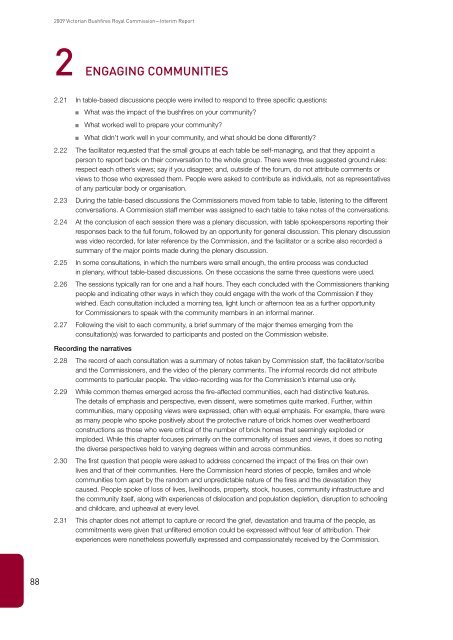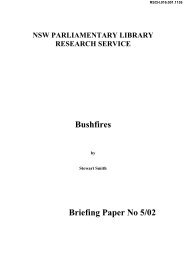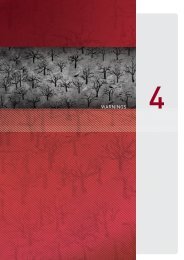engaging communities - 2009 Victorian Bushfires Royal Commission
engaging communities - 2009 Victorian Bushfires Royal Commission
engaging communities - 2009 Victorian Bushfires Royal Commission
Create successful ePaper yourself
Turn your PDF publications into a flip-book with our unique Google optimized e-Paper software.
<strong>2009</strong> <strong>Victorian</strong> <strong>Bushfires</strong> <strong>Royal</strong> <strong>Commission</strong>—Interim Report<br />
2 ENGAGING COMMUNITIES<br />
2.21<br />
2.22<br />
2.23<br />
2.24<br />
2.25<br />
2.26<br />
2.27<br />
In table-based discussions people were invited to respond to three specific questions:<br />
■■<br />
■■<br />
■■<br />
What was the impact of the bushfires on your community?<br />
What worked well to prepare your community?<br />
What didn’t work well in your community, and what should be done differently?<br />
The facilitator requested that the small groups at each table be self-managing, and that they appoint a<br />
person to report back on their conversation to the whole group. There were three suggested ground rules:<br />
respect each other’s views; say if you disagree; and, outside of the forum, do not attribute comments or<br />
views to those who expressed them. People were asked to contribute as individuals, not as representatives<br />
of any particular body or organisation.<br />
During the table-based discussions the <strong>Commission</strong>ers moved from table to table, listening to the different<br />
conversations. A <strong>Commission</strong> staff member was assigned to each table to take notes of the conversations.<br />
At the conclusion of each session there was a plenary discussion, with table spokespersons reporting their<br />
responses back to the full forum, followed by an opportunity for general discussion. This plenary discussion<br />
was video recorded, for later reference by the <strong>Commission</strong>, and the facilitator or a scribe also recorded a<br />
summary of the major points made during the plenary discussion.<br />
In some consultations, in which the numbers were small enough, the entire process was conducted<br />
in plenary, without table-based discussions. On these occasions the same three questions were used.<br />
The sessions typically ran for one and a half hours. They each concluded with the <strong>Commission</strong>ers thanking<br />
people and indicating other ways in which they could engage with the work of the <strong>Commission</strong> if they<br />
wished. Each consultation included a morning tea, light lunch or afternoon tea as a further opportunity<br />
for <strong>Commission</strong>ers to speak with the community members in an informal manner.<br />
Following the visit to each community, a brief summary of the major themes emerging from the<br />
consultation(s) was forwarded to participants and posted on the <strong>Commission</strong> website.<br />
Recording the narratives<br />
2.28<br />
2.29<br />
2.30<br />
2.31<br />
The record of each consultation was a summary of notes taken by <strong>Commission</strong> staff, the facilitator/scribe<br />
and the <strong>Commission</strong>ers, and the video of the plenary comments. The informal records did not attribute<br />
comments to particular people. The video-recording was for the <strong>Commission</strong>’s internal use only.<br />
While common themes emerged across the fire-affected <strong>communities</strong>, each had distinctive features.<br />
The details of emphasis and perspective, even dissent, were sometimes quite marked. Further, within<br />
<strong>communities</strong>, many opposing views were expressed, often with equal emphasis. For example, there were<br />
as many people who spoke positively about the protective nature of brick homes over weatherboard<br />
constructions as those who were critical of the number of brick homes that seemingly exploded or<br />
imploded. While this chapter focuses primarily on the commonality of issues and views, it does so noting<br />
the diverse perspectives held to varying degrees within and across <strong>communities</strong>.<br />
The first question that people were asked to address concerned the impact of the fires on their own<br />
lives and that of their <strong>communities</strong>. Here the <strong>Commission</strong> heard stories of people, families and whole<br />
<strong>communities</strong> torn apart by the random and unpredictable nature of the fires and the devastation they<br />
caused. People spoke of loss of lives, livelihoods, property, stock, houses, community infrastructure and<br />
the community itself, along with experiences of dislocation and population depletion, disruption to schooling<br />
and childcare, and upheaval at every level.<br />
This chapter does not attempt to capture or record the grief, devastation and trauma of the people, as<br />
commitments were given that unfiltered emotion could be expressed without fear of attribution. Their<br />
experiences were nonetheless powerfully expressed and compassionately received by the <strong>Commission</strong>.<br />
88
















